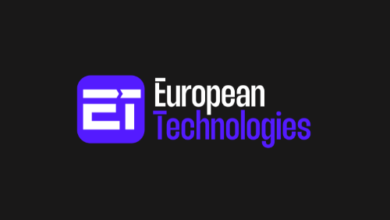How Colocation Providers are Positioning for Hybrid Cloud: Equinix

As more and more businesses pivot to hybrid cloud architectures, data center colocation providers are working to make sure their platforms jive with hybrid models. But they are doing so in different ways. To assess the state of hybrid cloud within the colocation market, Data Center Knowledge is interviewing a series of data center providers about their strategies for positioning their colocation platforms to enable customers’ hybrid cloud strategies.
This first article focuses on Equinix’s hybrid cloud strategy.
As the world’s largest colocation provider, Equinix doesn’t face as much pressure as its peers to leverage the hybrid cloud trend as a means of expanding its business. But it does need to cater to enterprise customers who are seeking flexible solutions for connecting workloads hosted in Equinix colocation facilities to public cloud services.
At the same time, Equinix remains keen to protect the unique identity that it has carved out for itself as a colocation provider that not only provides data center real estate, but also interconnection and, more recently, managed infrastructure offerings that allow customers to deploy workloads on preconfigured bare-metal servers in seconds.
Equinix is meeting this challenge by “building an ecosystem of solutions that enable customers to assemble and deploy hybrid cloud solutions on top of our global infrastructure,” according to Jacob Smith, VP bare metal strategy at Equinix.
That means the company continues to invest in its core colocation platform while simultaneously expanding more novel services — like Network Edge, Equinix Metal and Equinix Fabric — that give customers flexible deployment options for hybrid workloads.
Helping Enterprises Build Hybrid Cloud Faster
Asked about the pain points that Equinix aims to help colocation customers solve by supporting hybrid cloud architectures, Smith emphasized businesses’ need to “move faster” first and foremost. The company’s central goal is to deliver “an architecture that can evolve and scale over time in response to opportunities,” he said.
He mentioned the importance of optimizing performance and costs, too, as considerations for enabling hybrid architectures, but he framed hybrid cloud primarily as a way for businesses to scale and adapt their existing workloads.
It would seem, then, that Equinix’s key focus within the realm of hybrid cloud is on helping enterprises migrate from legacy architectures to hybrid alternatives in order to modernize their IT estates.
Smith did say that Equinix is seeing “strong growth from ‘cloud natives going hybrid,'” meaning companies that already have agile cloud architectures in place but want to gain more control and better performance by extending them to hybrid architectures. Yet enterprises that want to “invest in moving faster and becoming more digital” are driving much of the interest in Equinix’s hybrid offerings, he said.
Global Colocation Platform as a Key to Hybrid Cloud Success
Equinix, which in recent years has steadily expanded its global reach to include more than 200 data centers on five continents, aims to leverage the scale of its data center operation as a key differentiator for its hybrid cloud strategy.
“We’re building an ecosystem of solutions that enable customers to assemble and deploy hybrid cloud solutions on top of our global infrastructure,” Smith said, adding that the company’s large footprint is valuable to customers because it allows them to “place data and trusted digital assets literally at the center of the clouds, users, and other providers about which they care.”
Given that one key motivation for migrating to a hybrid cloud architecture is to improve performance for user bases located in geographies that the public cloud alone can’t serve well, it’s unsurprising that Equinix is working to capitalize on the scale of its colocation platform when delivering hybrid cloud solutions. It’s a strength that relatively few other colo providers can match.
Partnerships Play Critical Role in Equinix’s Hybrid Cloud Strategy
Despite its behemoth status in the colocation industry and its investment in in-house hybrid cloud solutions like Metal and Fabric, Equinix is leaning heavily on partnerships to help build out its suite of hybrid cloud offerings.
“Staying true to our core value of neutrality, we see partners as the critical part of Equinix’s hybrid cloud strategy,” Smith said. Equinix’s network of partners that offer services relevant for hybrid use cases include OEM and storage vendors like Dell, Cisco, and Pure Storage, as well as companies rooted in “the wide world of open source software, SaaS, and DevOps tooling, where we are investing heavily,” according to Smith.
Interestingly, he didn’t bring up public cloud vendors as key partners in Equinix’s hybrid strategy. Equinix does work actively with these companies to bring platforms like AWS Outposts and Azure Arc to its customers. Equinix interconnect services also integrate seamlessly with public cloud platforms.
It’s clear, though, that Equinix sees the hybrid cloud landscape as being about more than merely integrating with hybrid cloud services offered by the public cloud vendors. Equinix appears equally — if not more — interested in investing in a broader set of services and platforms that allow its customers to build hybrid architectures using a wide variety of configurations.
Conclusion
In short, Equinix’s hybrid cloud strategy centers around blending in-house technologies with partner solutions, including but not limited to those of public cloud vendors. And although its major focus to date appears to be on helping enterprises move into hybrid architectures in order to gain speed and agility, the company is also eying businesses that already are cloud-native but want more performance and control than they can achieve through the public cloud alone.



